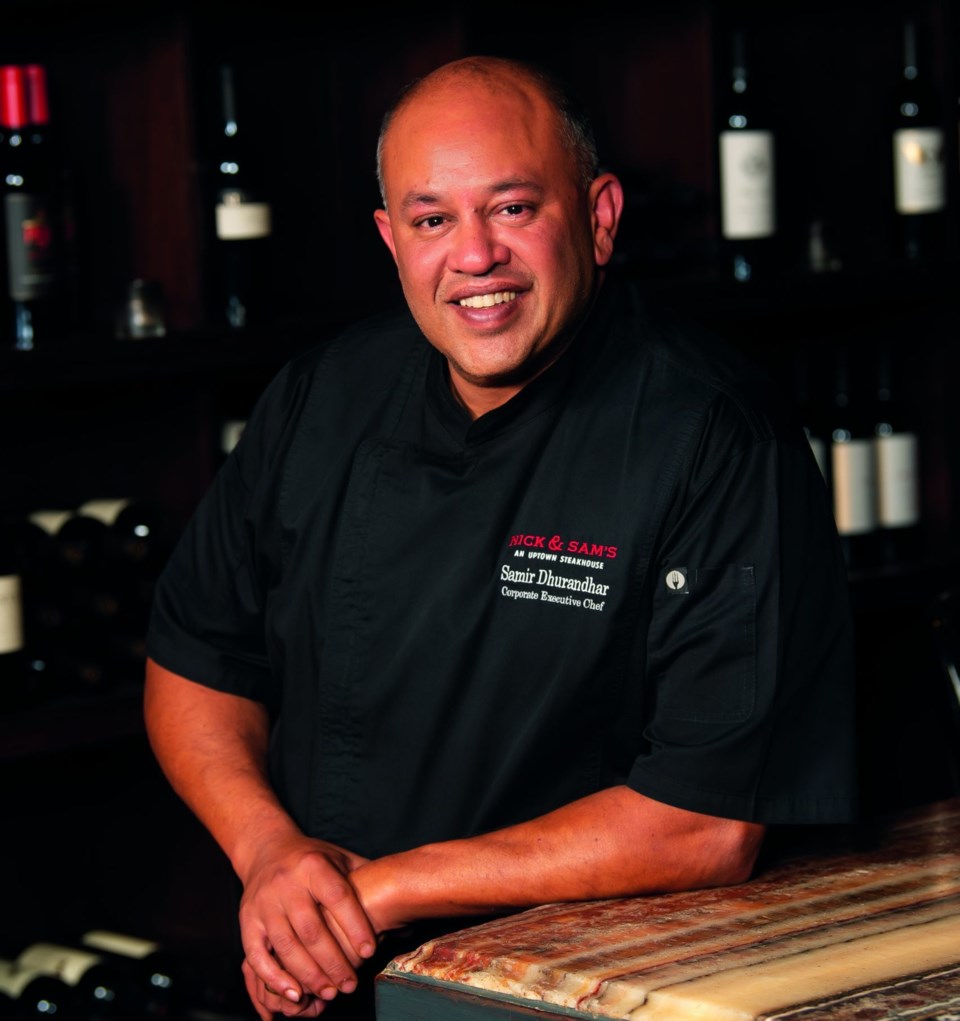In this excerpt from Raising the Steaks: My Journey to Creating the Best Steakhouse in the World: Nick & Sam's, Samir Dhurandhar recalls his meeting with a culinary icon. A longtime Plano resident, Dhurandhar is the founding chef at Nick & Sam’s in Dallas.
After years of our hearing his enthusiastic tales about the wonders of the USA, my father finally brought our entire family over to the States for a coast-to-coast trip. We traveled first to Disney World in Orlando and finished in Santa Barbara, California, not far from his old UCLA stomping grounds. While in Santa Barbara, we stayed with one of Dad’s dearest and longest-term friends, Robert Huttenback, or “Uncle Bob,” as we called him in the endearing Indian tradition of addressing elder family friends as “uncle” and “aunty.”
Uncle Bob had a lovely backyard swimming pool, which I was floating in one morning, daydreaming deeply, of course, when Bob suddenly appeared poolside. “Can you come to the kitchen real quick, Samir?” he asked. “I want you to meet someone.”
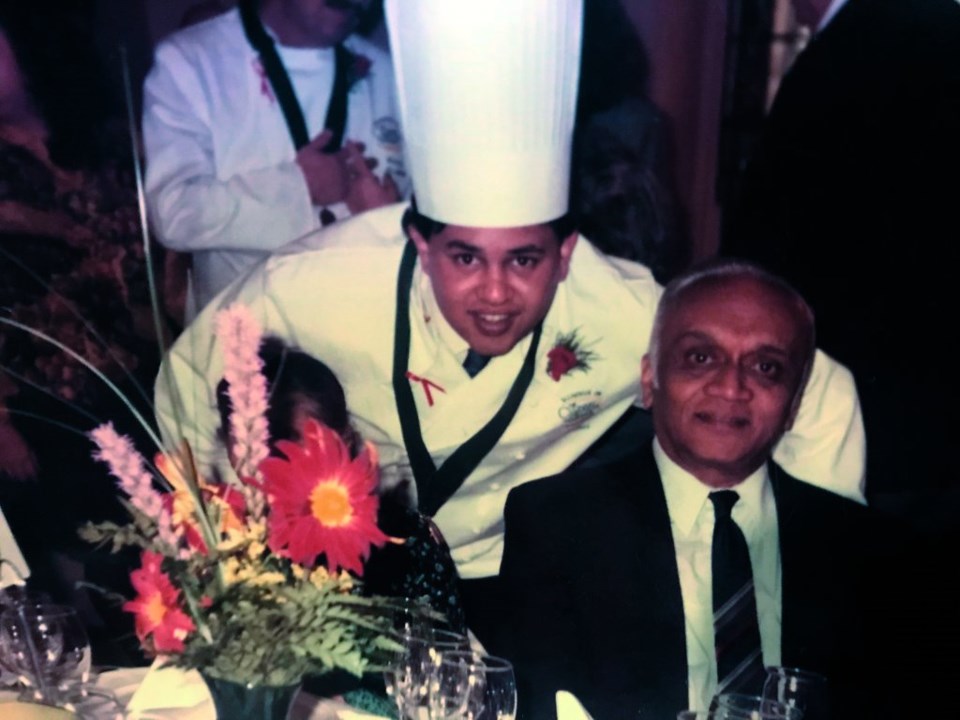
I dried off hastily and headed inside. “What is this?” I wondered. As I walked in the kitchen, I sensed a commanding presence. There, standing next to Uncle Bob, was a distinguished-looking middle-aged woman. Smartly dressed and statuesque, she had to have stood more than six feet tall. “Samir, do you know who this is?” Bob asked. With curious eyes, I stared up at the woman, but I just couldn’t place her. I sheepishly responded, “I apologize, I don’t.” Bob said, “Samir, this is Julia Child.” As in the Julia Child, the famous chef, cooking educator, television personality, and author of the world-renowned cooking bible Mastering the Art of French Cooking, among other magnificent cooking books. Of course, I didn’t realize any of this at the time. I was simply told that she lived in nearby Pasadena, was a friend of Uncle Bob’s family, and was very influential, but that’s it.
Julia and I sat and talked for the longest time. That “real quick” meeting that Uncle Bob had summoned me for had turned into an hour-and-a-half heart-to-heart talk. We discussed family and life in general in addition to cooking, of course. Julia was very easy to speak with and came off as unpretentious, smart and perceptive. I found out later that she’d been a top-secret researcher in World War II for America’s Office of Strategic Services. Wow!
I don’t recall many specifics of our conversation, but I remember her asking me to share my passion for food with her. And that I did, in my own awkward way. I remember feeling a little embarrassed about the mumbo-jumbo that I was spouting. I was a twenty-one-year-old “kid” who was still a little wet behind the ears, doubly so after my interrupted dip in the pool.
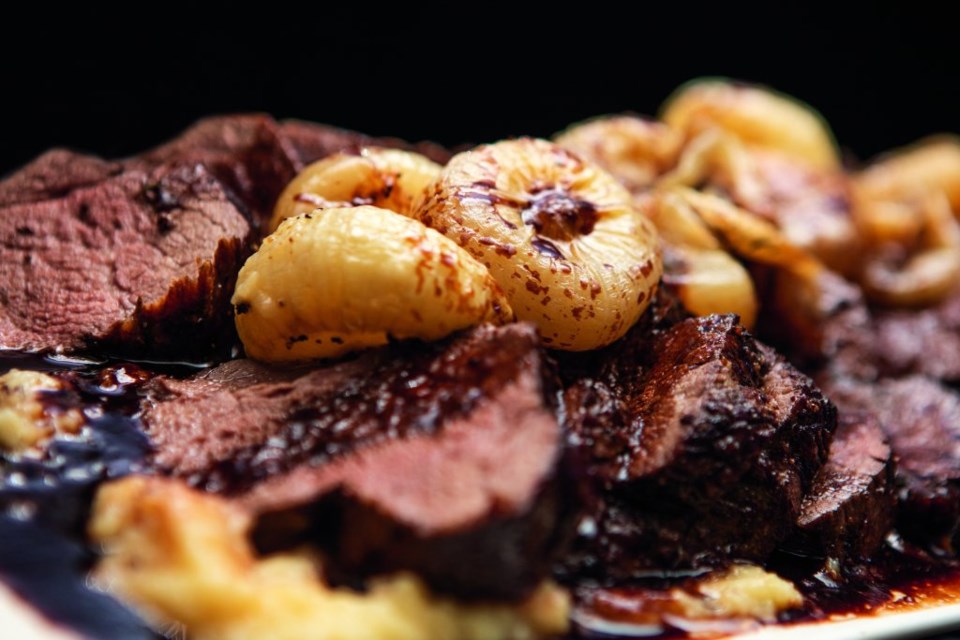
But Julia gracefully indulged my youthful spirit. Although I had prepared meals for my family as a kid and worked for a while as a junior sous chef at the Sheraton Hotel in Mumbai, I had very little professional experience. But as we spoke, I think Julia recognized that my passion for cooking was not only genuine, but it also ran deep, especially as I recollected my mother’s guiding influence and inherited passion for distinctive foods. I’m sure she saw my face light up as we discussed the art and craft of preparing creative and nutritious meals.
As I reflect, it was a seminal moment in my life. After that, everything started coming together. The one big thing holding me back in my formative schooling had been my lack of direction. But here I was, starting to see a much clearer purpose for my life — happily, one that dovetailed with my passion for cooking.
Julia told me, “Samir, if you are interested in this as a career, you should go to the Culinary Institute of America.” She seemed sure I would get in, so I followed her advice. On my return to Mumbai, my desire to be a great chef had not faded in the least; it was hitting a fever pitch. The thought of doing something that I love as a vocation really elevated my spirit. So, I applied to the Culinary Institute of Hyde Park, New York, USA, with the blessing of both of my parents and was soon delighted to learn that I had gained acceptance for the very next school year, starting in fall 1990.
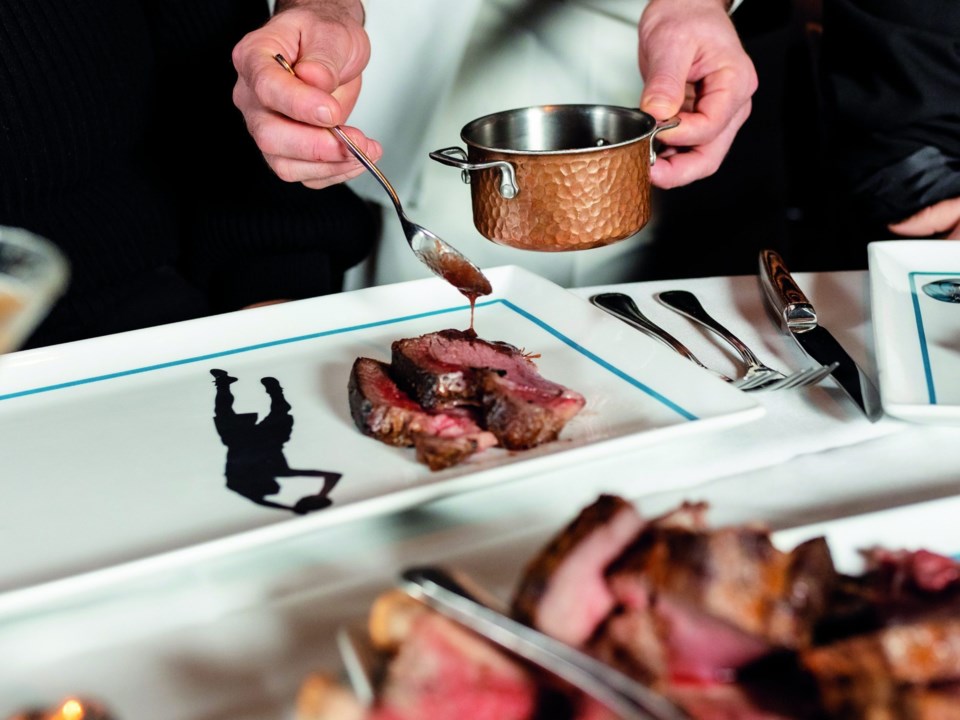
As I’ve said, it never fully hit me when I met her what a big deal Julia Child was to the culinary world — that is, until I got to the Culinary Institute of America (we called it the CIA), the first school to formally teach the culinary arts in the States. Julia was like a rock star there, idolized by its staff, students and graduates. What’s more, our paths were destined to cross again.
Culinary school was challenging at first, to say the least. The biggest obstacle facing me was adaptation. So many people tend to resist adapting when they find themselves in a foreign country or a place outside their comfort zone. But I was determined to learn the culture, the food, the night spots, the slang and the finer points of American food preparation.
I was twenty-two years old when I first walked through the Institute’s doors and met my roommate, a naive sixteen-year-old American kid. As I entered our dorm room, the look on his face seemed to shout, “Oh, my God, I have to spend two semesters with this guy?!”
He saw me as a curiosity, with my dark skin, exotic accent, and “foreign” features and dress, so he started peppering me with questions, starting with where I was from. When I replied that I was from India, he responded, “Where’s that?”
Where’s that? Ha! Oh, boy, am I going to take this kid for a ride, I thought. I just might have to mess with him a little. So, as we spoke, I convinced him with a straight and solemn face that my father was the “king” of the western region of India and that I was a “prince.” So thrilled to be the roommate of royalty, he told practically everyone in school my story. Soon, people in the hallways were bowing to me, and I must admit that I took my sweet time setting them straight. It’s not often that you get to be a prince!
I was soon brought down to earth, humbled by my early class work, particularly in those first few weeks. I was especially challenged by what you could call “American food culture shock.” I had spent virtually my entire life in India with minimal exposure to Western-style cooking and foodstuffs. And in just my third class, Purchasing and Receiving, instructors discovered my weakness. They had spread out a substantial variety of meats and vegetables and cooking ingredients on a big table and asked students to identify and list them. The problem was that I had never seen half of these things!
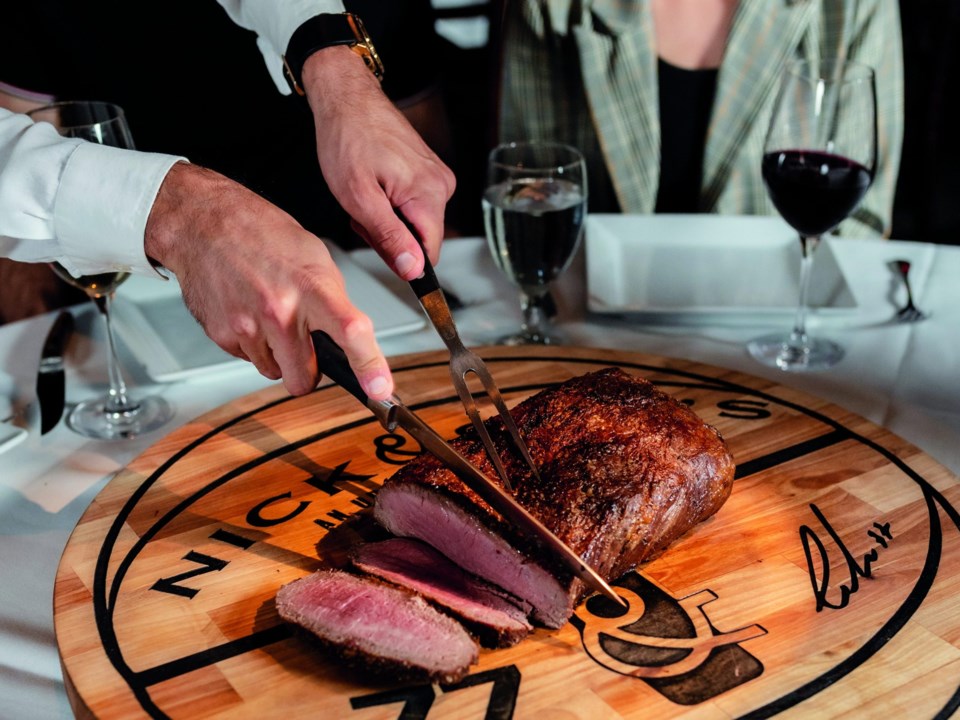
I couldn’t identify the poblano pepper, for example, because I had grown up eating only green chilies such as the Kashmiri and Guntur varieties — sometimes for punishment! What’s more, I had never seen red peppers, fennel, radicchio, rosemary, red cabbage, romaine, or iceberg lettuce, as well as an assortment of other items, such as sushi. Needless to say, my food identity list was sparse, and I fared poorly in that early class, coming away with a “D” paper.
When I got my grade, a student sitting next to me leaned over, saw my paper, and immediately started laughing out loud. At the Culinary Institute, I was learning to rein in my youthful temper, but damn, that guy really pissed me off. But instead of lashing out or getting discouraged, I used the incident to motivate me. It was just the added impetus I needed to press harder and rein in those shortfalls to accelerate my learning curve. I vowed to stay in touch with this arrogant young man to compare how he progressed in his career and I in mine. I won’t identify the student who made fun of me, but let’s just say that my career path over the years has compared quite favorably to his.
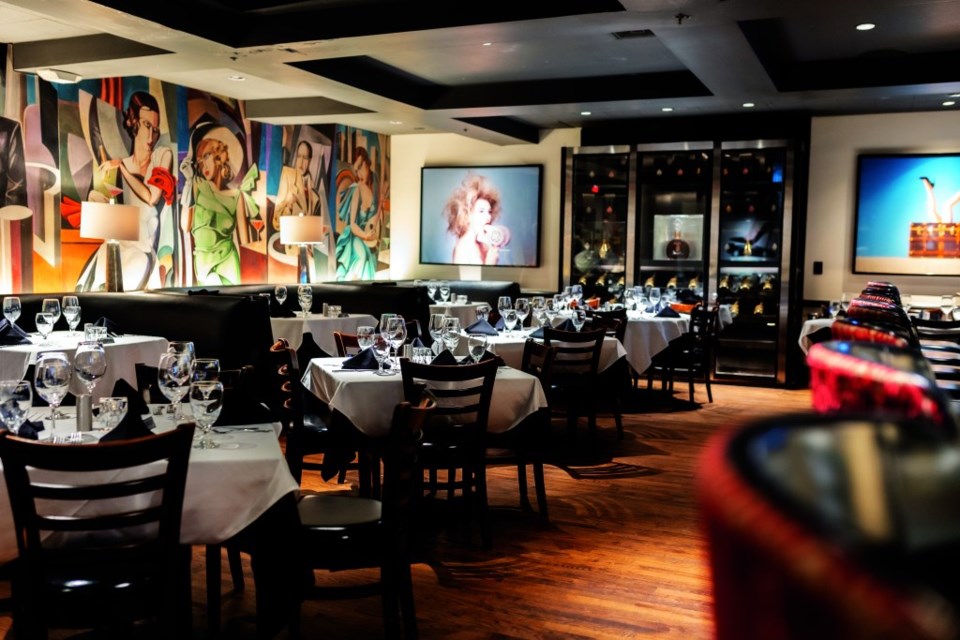
I spent far more time learning these foods than anyone else in school. I would feel awkward going out with friends to places like a sushi bar, where I was clueless how to order. Through all of this, I had to take a step back and remind myself to adapt.
At this point, my eyes were wide open, and I gradually felt more at ease. Three months into the semester, the esteemed Julia Child, who had inspired my culinary-school adventure, entered the picture again. She was visiting with instructors on campus and was signing her many books for students. She drew quite a crowd.
By this time, I was beginning to grasp what a huge influence Julia had been on not only me but also the cooking world everywhere. Her career and creative influence had served to bring the great chefs of the world into the limelight at a time when we were largely considered back-room laborers. To this day, we can’t thank Julia enough.
When I got to the front of the line and placed my book in front of her to sign, Julia glanced up from the table, smiled, and said, “Samir, how wonderful to see you!” The fact that she remembered me and our meeting in Uncle Bob’s kitchen simply blew me away. More motivation!
By this time, that sense of higher purpose that had been germinating in me was really starting to bloom. I was slowly overcoming my cultural and professional barriers, mostly with hard work, careful observation, and yes, extra studying. The word “study” had evolved from a bad word in my vocabulary to an essential one.
Raising the Steaks: My Journey to Creating the Best Steakhouse in the World: Nick & Sam's was published on June 13, 2023.

